 February 28, 2019 John E. Ross, KD8IDJ, Editor
| |||||||
V84SAA DXpedition is Front-Page News in Brunei The V84SAA DXpedition February 6 - 18 received a great deal of positive attention in Brunei -- a tiny nation surrounded by Malaysia on the South China Sea. The arrival of the DXpedition team not only merited coverage on the local evening newscast, but a front-page newspaper article. According to the article, the DXpedition aimed "to increase cooperation among [Amateur Radio operators] besides instilling the spirit of teamwork and fostering close ties. The expedition also serves to help promote the country's uniqueness and natural heritage through Amateur Radio."
"The SSB camp was from a rented villa on a small hilltop inland a bit, and the CW camp was in a tent right on the beach -- with all our CW antennas," Briggs said. "Most of the operators at the SSB villa stayed and ate their meals at that location. Our beach site had very different and Spartan facilities; there we usually lunched on vanilla cookies and water." Briggs said DXpedition leader Krassy Petkov, K1LZ, handled 80-meter duty next to the 160-meter position, where Briggs and other team members operated. Briggs is the author of DXing on the Edge: The Thrill of 160 Meters. "Propagation was tough overall without good openings on 15, 12, and 10 meters for the most part, so the bulk of our contact total came from the low bands through 20 meters. The contact total was 58,120 contacts, with 4,081 contacts on 160 (459 with North American stations) and 5,807 contacts on 80 meters (1,014 with North American stations)," Briggs said.
Briggs acknowledged that the team's most challenging times were on 80 and 160 meters, "where it was really difficult to work into North America -- either at sunset or sunrise -- but we never missed an opening and were there trying every day." The team made the first-ever 60-meter contact after receiving permission to operate on that band. "We were a large international team, and we were blessed with fantastic local support from Tamat Lampoh, V85TL, and the local Brunei Darussalem Amateur Radio Association," Briggs said. "They were wonderful hosts." VE7DXW's "RF Seismograph" May Be Real Seismograph Alex Schwarz, VE7DXW, in British Columbia, Canada, is exploring the possibility that "RF signatures" detected by the RF Seismograph propagation tool could also be indicating earthquakes, and may even be able to predict them shortly before they occur. A real-time HF propagation-monitoring tool developed by Schwarz and the MDSR team, the RF Seismograph shows both band noise and activity or band activity alone on six HF bands. It's a project of the North Shore Amateur Radio Club (NSARC).
"We had been doing the solar eclipse experiment, and we developed the RF Seismograph software to look for changes in propagation during the eclipse," Schwarz explained. "After the eclipse, we decided to leave the RF Seismograph running, and we have now collected 4 years of data." The system uses an omnidirectional multiband antenna to monitor JT-65 frequencies (±10 kHz) on 80, 40, 30, 20, 15, and 10 meters. Recorders monitor the background noise and display the result in six color-coded, long-duration graphs displaying 6 hours of scans. When signals are present on a band, its graph trace starts to resemble a series of vertical bars. Most recently, the RF Seismograph recorded the magnitude 7.5 earthquake in Ecuador on February 22. Schwarz recounted that noise on 15 meters began to be visible about 1 hour before the quake; then, 2 hours after the quake released, 15 meters started to recover. The US Geological Survey said the quake was about 82 miles below ground. It did not affect 80 meters. Schwarz speculated that the quake was easy to see on the RF Seismograph because 15 meters typically is not open during hours of darkness -- especially when the solar flux is only 70. Following a magnitude 5.0 earthquake off the coast of Vancouver Island, his RF Seismograph picked up changes. Canada's government-run Earthquakes Canada was able to provide Schwarz with a list of magnitude 6.0 or greater events since the RF Seismograph went into operation, and the two teams have been collaborating to find a correlation between HF propagation anomalies and earthquakes. With the measurements, Schwarz has been attempting find a correlation between the list of past geological events and what his RF Seismograph may have sensed on those occasions.
"The earthquakes show up as RF noise because of the electric field lines, now scientifically confirmed to change the way the ionosphere reflects RF," Schwarz said. He cited an article in the October 2018 edition of Scientific American. (Erik Vance, "Earthquakes in the sky," Scientific American, October 2018, p. 44). Schwarz said 171 earthquakes -- all magnitude 6.0 events or greater -- were studied, and only 15 of them had no RF noise associated with them. In 26 cases, the time of the disturbance detected by the RF Seismograph failed to match the USGS-reported time of the quake. Schwarz said that in 72% of the earthquake studies, the RF Seismograph was able to detect an increase in noise on 80 meters, typically before and after the event. "More analysis is needed," Schwarz has concluded. Read more. The Doctor Will See You Now! "Meet the Raspberry Pi" is the topic of the new (February 28) episode of the "ARRL The Doctor is In" podcast. Listen...and learn!
Every 2 weeks, your host, QST Editor-in-Chief Steve Ford, WB8IMY, and the Doctor himself, Joel Hallas, W1ZR, will discuss a broad range of technical topics. You can also email your questions to doctor@arrl.org, and the Doctor may answer them in a future podcast. Enjoy "ARRL The Doctor is In" on Apple iTunes, or by using your iPhone or iPad podcast app (just search for "ARRL The Doctor is In"). You can also listen online at Blubrry, or at Stitcher (free registration required, or browse the site as a guest) and through the free Stitcher app for iOS, Kindle, or Android devices. If you've never listened to a podcast before, download our beginner's guide. ARRL Leonard Award Presented Live on The Weather Channel ARRL Southeastern Division Director Greg Sarratt, W4OZK, traveled to Atlanta on February 15 to make a live, on-air presentation of the 2017 ARRL Bill Leonard W2SKE Professional Media Award for Video Reporting to The Weather Channel's Jim Cantore and Jen Carfagno. Cantore and Carfagno co-host The Weather Channel's morning AMHQ: America's Morning Headquarters program.
The 2017 Leonard award recognized the AMHQ co-hosts' September 2017 interview of then-ARRL Emergency Preparedness Manager Mike Corey, KI1U. Corey discussed ARRL's efforts to assist the American Red Cross in the response to the devastation caused by Hurricane Maria in Puerto Rico. The February 15 presentation included a clip of the Corey interview as well as an interview with Sarratt. He presented AMHQ co-hosts with a $250 check as part of the award, which The Weather Channel has donated to the American Red Cross. "I enjoyed my visit to The Weather Channel, making the presentation, and meeting many friendly people there," Sarratt said. "Before the presentation, I was given a quick tour of the studio and, after the presentation, I was given a detailed tour of the control room and learned how the shows are put together and produced." It's estimated that nearly 250,000 people were watching The Weather Channel at the time of the presentation. Bakelite Patent Awarded 100 Years Ago Radio amateurs of a certain age are more familiar than most newcomers with the trade name Bakelite, which derives its name from its inventor Leo Baekeland, who developed Bakelite phenolic resin, the first thermosetting plastic, in 1907. His process patent for making insoluble products of phenol and formaldehyde -- the components of Bakelite -- was filed that year, Once a Bakelite product is formed, it will not change shape or melt under heat. In compression molding, the resin is generally combined with fillers such as wood or asbestos before it's pressed into the ultimate product shape.Tube sockets often were constructed using Bakelite. It later found its way into such products as jewelry. In February 1909, Baekeland officially announced his achievement at a meeting of the New York section of the American Chemical Society. The K7RA Solar Update Tad Cook, K7RA, from Seattle, reports: No sunspots have been seen for 3 weeks. Today (February 28) Earth is bathed in solar wind from a wide hole in the sun's atmosphere. The average daily solar flux and geomagnetic indices remain practically unchanged from the previous 7 days. The average daily solar flux was 70.7, average daily planetary A index was unchanged at 4.9, and average daily mid-latitude A index was 4.
Predicted planetary A index is 24, 16, 12, and 8 on February 28 - March 3; 5 on March 4 - 6; 8, 10, and 8 on March 7 - 9; 5 on March 10 - 11; 12 and 10 on March 12 - 13; 5 on March 14 - 19; 10 on March 20; 5 on March 21 - 25; 18, 24, 16, 12, and 8 on March 26 - 30; 5, 8, 5, 8, 10, and 8 on March 31 - April 5; 5 on April 6 - 7; 12 and 10 on April 8 - 9, and 5 on April 10 - 13. Sunspot numbers for February 21 - 27 were 0, 0, 0, 0, 0, 0, and 0, with a mean of 0. The 10.7-centimeter flux was 70.8, 71.2, 70.7, 70.5, 70.4, 70.6, and 70.7, with a mean of 70.7. Estimated planetary A indices were 11, 4, 3, 2, 2, 2, and 10, with a mean of 4.9. Estimated mid-latitude A indices were 9, 3, 2, 1, 2, 2, and 9, with a mean of 4 A comprehensive K7RA Solar Update is posted Fridays on the ARRL website. For more information concerning radio propagation, visit the ARRL Technical Information Service, read "What the Numbers Mean...," and check out K9LA's Propagation Page. A propagation bulletin archive is available. Monthly charts offer propagation projections between the US and a dozen DX locations. Share your reports and observations. Carole Perry, WB2MGP, is First Recipient of Award Named in Her Honor ARRL congratulates Amateur Radio educator Carole Perry, WB2MGP, for being the first recipient of the newly established Carole Perry Educator of the Year Award, presented on February 9 by Orlando A fellow and director of the Radio Club of America (RCA), Perry is a past Dayton Hamvention® Amateur of the Year and a recipient of the ARRL Instructor of the Year Award. She sits on the RCA Scholarship Committee and chairs the RCA Youth Activities Committee, which she established in 2007. Perry has moderated the Hamvention Youth Forum for 31 years. The 2019 Orlando HamCation was the ARRL Southeastern Division Convention. Just Ahead in Radiosport
See the ARRL Contest Calendar for more information. For in-depth reporting on Amateur Radio contesting, subscribe to The ARRL Contest Update via your ARRL member profile email preferences. WWV Centennial Special Event Will Use WW0WWV With its funding secure for another year, WWV, the world's oldest continuously operating radio station, will have extra reason to celebrate its centennial this fall. The National Institute of Standards and Technology (NIST) and the Northern Colorado Amateur Radio Club (NCARC) have teamed up to organize 100th anniversary events. A memorandum of understanding is pending. The WWV Committee has announced that the call sign WW0WWV was granted on February 23 to the WWV Amateur Radio Club for use during the Amateur Radio special event, planned to run September 28 - October 2, with operators on the air around the clock. NCARC predicts the effort will require "hundreds" of volunteer operators.
The WWV Committee met on February 22, with representatives of NCARC and NIST on hand, to further firm up plans for the centennial celebratory events. Although the US government cannot fund any Amateur Radio special event expenses, club members will be allowed to use a 15-acre parcel on WWV property, Swartz has explained. The operating site lies outside the security fence. For its part, NIST will focus on plans for an October 1 recognition ceremony and an open house at the radio station north of Fort Collins. FCC Announces Career Opportunities The FCC has announced job openings that may be of interest radio amateurs. The agency is seeking to fill two openings for the position of Electronics Engineer (Field Agent) -- one in Boston, Massachusetts, and the other in Los Angeles, California. The FCC also is looking to fill a position of Attorney Advisor (Field Counsel) in Washington, DC. The Electronics Engineer (Field Agent) resolves interference, educates The Attorney Advisor (Field Counsel) would provide authoritative legal advice and services to the Field Director and the professional staff of the Enforcement Bureau field on legal matters pertaining to assigned legal issues and enforcement activities. This individual would be responsible for proper interpretation of the Communications Act of 1934, as amended, FCC rules and policy, and would provide advice on legal issues affecting enforcement policy matters. The respective job postings provide full details on how to apply. The closing date for applications is March 22. Read more. Over-the-Horizon Radars Raising the Ire of European Monitoring Systems The January issue of the IARU Region 1 Monitoring System (IARUMS) newsletter reports the Russian "Sunflower" coastal radar, located east of Vladivostok, is being heard at nights on 3,716 kHz and 6,860 - 7,005 kHz, as well as on several 60-meter frequencies. A Chinese wideband over-the-horizon (OTH) radar also appeared on 7,000 kHz in early January.
"Once again we have problems with short-wave radars," said the Deutscher Amateur Radio Club (DARC) Monitoring System. DARC is Germany's IARU member-society. "The Russian coastal radar 'Sunflower' transmits on almost every evening at 5,310 - 5,410 kHz. As a result, our new mini-band is useless." DARC was referring to the narrow worldwide allocation of 5,351.5 - 5,366.5 kHz to the Amateur Service on a secondary basis by World Radiocommunication Conference 2015 (WRC-15). It said the interference appears as a deep hum. The Sunflower radar employs Frequency Modulation on Pulse (FMOP) at 43 sweeps per second to detect aircraft and, over water, vessels. DARC continued, "The system is so successful that the Chinese operate several 'sunflowers' on the east coast. Chinese OTHs work almost daily in the 20-meter band. In the mornings, we can often receive them with high field strengths." DARC said the Chinese OTHs cause worse interference than the Russian radars.
In December, IARUMS reported an OTH radar active on 21,170 kHz from the Sovereign Base areas of Akrotiri and Dhekelia, a British Overseas Territory on the island of Cyprus. While 60 meters and 80/75 meters are shared bands, the 7,000 - 7,200 kHz segment of 40 meters is allocated exclusively to the Amateur Radio Service worldwide. Some domestic Amateur Radio HF allocations outside Region 2 (the Americas), such as 7,200 to 7,300 kHz, are either shared with other services or not available to radio amateurs. On HF allocations such as 30 and 60 meters, Amateur Radio is secondary to other users. The 20-, 17-, 15-, 12-, and 10-meter bands are exclusively available to the Amateur Radio Service worldwide. Using Your Noodle for Halyard Protection Sailors know that a line rubbing against a fixed object such as a dock can soon fray and part. To protect lines and halyards in those situations, they often wrap the line with fabric "chafing gear" to reduce wear on the line.
The Delaware Valley Radio Association's club station W2ZQ had two antenna halyards that were rubbing against the shack's roofline. To prevent their parting and, thus, dropping the wire antennas were supporting, the club needed to do something. The solution appeared in a neighbor's trash, where two swimming pool "noodles" had been discarded. Such foam toys often have a hollow center, so slicing them lengthwise allows them to be easily slipped around the halyards. These then were placed near the contact point and secured with short pieces of string (cable ties would work too) to keep them from sliding out of position. "Eighteen months later, the antenna halyards are still in good shape!" reports Gary Wilson, K2GW. A variation on this theme would be to use pre-slit foam pipe insulation. -- Thanks to Gary Wilson, K2GW In Brief...
Upcoming ARRL Section, State, and Division Conventions
Find conventions and hamfests in your area. | |||||||
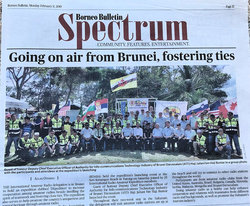 "So yes, this was a pretty big deal over there!" V84SAA team member Jeff Briggs, K1ZM/VY2ZM told ARRL. In a narrative he provided to
"So yes, this was a pretty big deal over there!" V84SAA team member Jeff Briggs, K1ZM/VY2ZM told ARRL. In a narrative he provided to 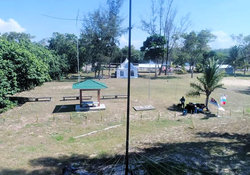
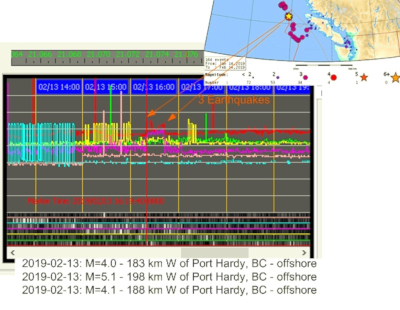
(1).jpg)
 Sponsored by
Sponsored by .jpg)
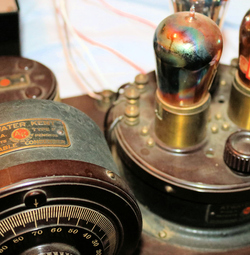 and Baekeland was awarded a patent a century ago come this December. Bakelite found a place in numerous technologies, including early ham gear and radios, widely employed as an insulating material.
and Baekeland was awarded a patent a century ago come this December. Bakelite found a place in numerous technologies, including early ham gear and radios, widely employed as an insulating material.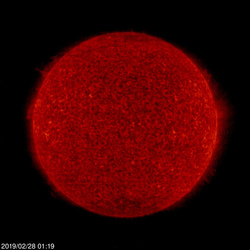 Predicted solar flux over the next 45 days is 70 on February 28 - March 6, and 71 on March 7 - April 13.
Predicted solar flux over the next 45 days is 70 on February 28 - March 6, and 71 on March 7 - April 13.-with-Award-at-Orlando-2019.jpg) HamCation®. The award, to be given annually in Perry's name, recognizes outstanding dedication in educating and advancing today's youth about Amateur Radio.
HamCation®. The award, to be given annually in Perry's name, recognizes outstanding dedication in educating and advancing today's youth about Amateur Radio..jpg)
 "The 100th anniversary is an occasion to celebrate radio and our understanding of the electromagnetic spectrum, and an opportunity to help people everywhere appreciate what radio does in their everyday lives," said Dave Swartz, WODAS, who has been spearheading the on-the-air event.
"The 100th anniversary is an occasion to celebrate radio and our understanding of the electromagnetic spectrum, and an opportunity to help people everywhere appreciate what radio does in their everyday lives," said Dave Swartz, WODAS, who has been spearheading the on-the-air event..jpg) users, and enforces regulations. An in-depth knowledge of electronic engineering is required. A full range of skills relating to inspections and monitoring is necessary.
users, and enforces regulations. An in-depth knowledge of electronic engineering is required. A full range of skills relating to inspections and monitoring is necessary.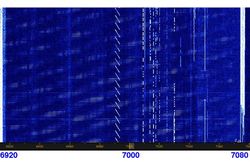
.jpg) DARC mentioned other OTH radars operating on 40 meters: "At the moment we have extreme problems with the 'Container' radar from Russia." IARUMS has often reported problems from this radar.
DARC mentioned other OTH radars operating on 40 meters: "At the moment we have extreme problems with the 'Container' radar from Russia." IARUMS has often reported problems from this radar..jpg)
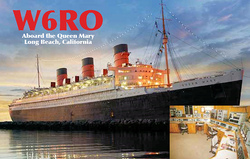 W6RO aboard the Queen Mary to Celebrate 40th Anniversary in April The 50-member volunteer crew of the Queen Mary
W6RO aboard the Queen Mary to Celebrate 40th Anniversary in April The 50-member volunteer crew of the Queen Mary .jpg) IARU Region 1 Youth Contesting Program Wants to Enlist More "Big-Gun" Stations International Amateur Radio Union Region 1 (
IARU Region 1 Youth Contesting Program Wants to Enlist More "Big-Gun" Stations International Amateur Radio Union Region 1 (.JPG) Hundreds Report Hearing SAQ Alexanderson Alternator on Christmas Eve Alexanderson Alternator transmissions from SAQ in Sweden on Christmas Eve 2018 drew more than
Hundreds Report Hearing SAQ Alexanderson Alternator on Christmas Eve Alexanderson Alternator transmissions from SAQ in Sweden on Christmas Eve 2018 drew more than 







